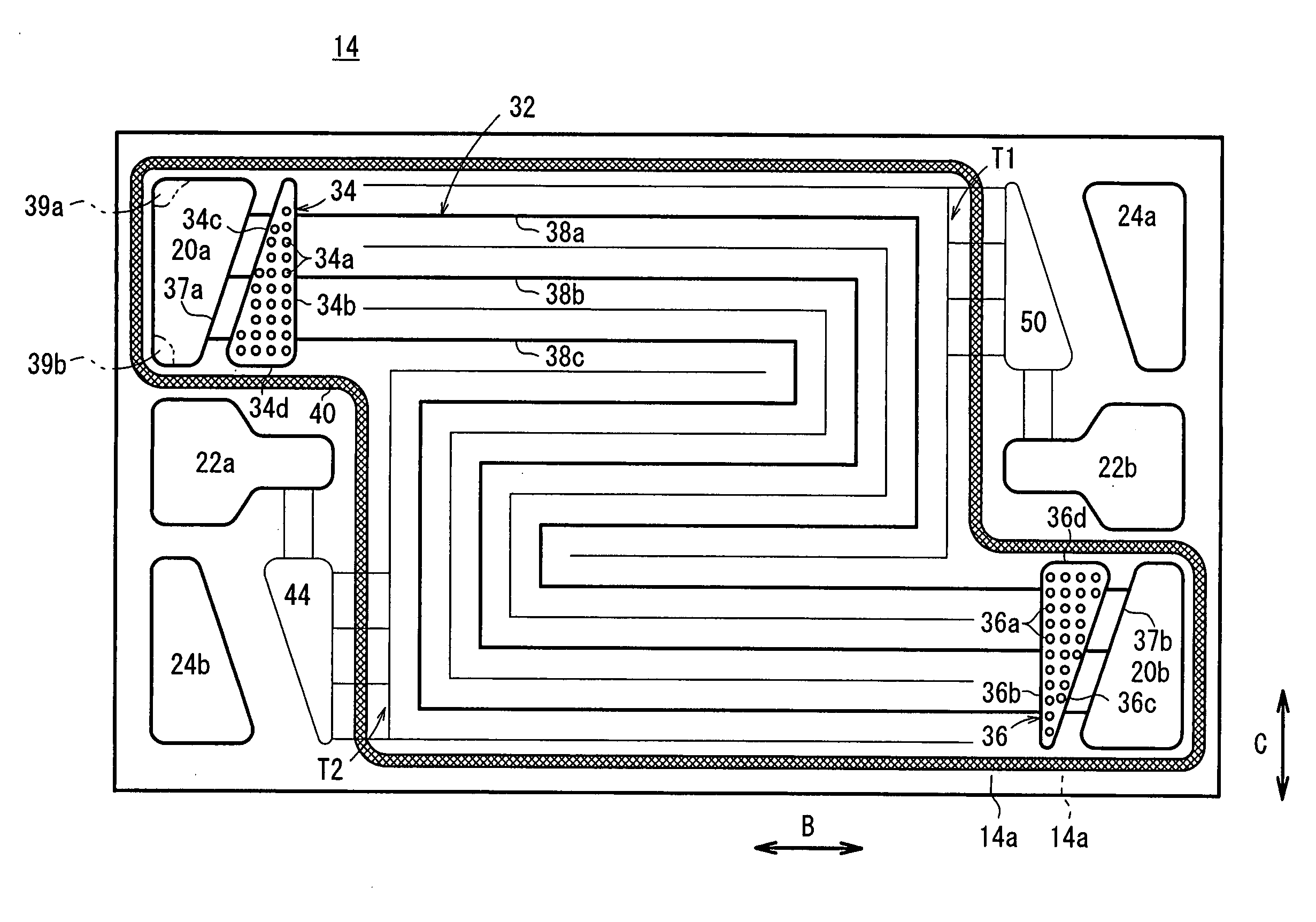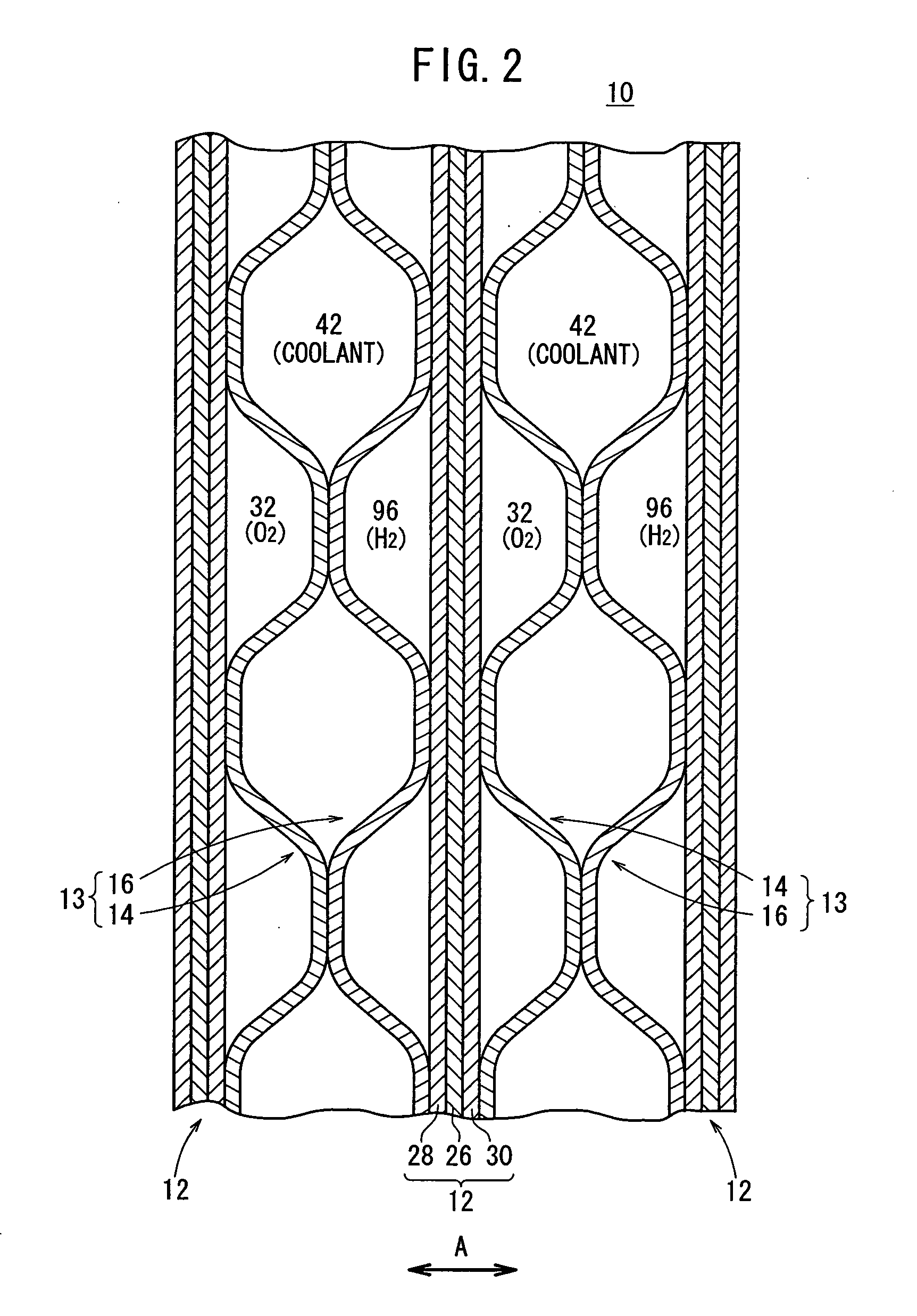Fuel cell
a fuel cell and electrode technology, applied in the field of fuel cells, can solve the problems of not being able to maintain desired power generation performance, reactant gas not being uniformly supplied over the entire surface of the electrode, and not being able to achieve uniform output density per unit area in the entire fuel cell, so as to achieve the effect of improving the output density per unit area and simplifying the buffer structur
- Summary
- Abstract
- Description
- Claims
- Application Information
AI Technical Summary
Benefits of technology
Problems solved by technology
Method used
Image
Examples
Embodiment Construction
[0032]FIG. 1 is an exploded view showing main components of a fuel cell 10 according to an embodiment of the present invention. FIG. 2 is a cross sectional view showing a part of the fuel cell 10.
[0033] The fuel cell 10 is formed by stacking a membrane electrode assembly (electrolyte electrode assembly) 12 and separators (metal separators) 13 alternately. Each of the separators 13 includes first and second metal plates 14, 16, which are stacked together.
[0034] As shown in FIG. 1, at one end of the fuel cell 10 in a direction indicated by an arrow B, an oxygen-containing gas supply passage (reactant gas passage) 20a for supplying an oxidizing gas (reactant gas) such as an oxygen-containing gas, a coolant supply passage 22a for supplying a coolant, and a fuel gas discharge passage (reactant gas passage) 24b for discharging a fuel gas (reactant gas) such as a hydrogen-containing gas are arranged vertically in a direction indicated by an arrow C. The oxygen-containing gas supply passa...
PUM
 Login to View More
Login to View More Abstract
Description
Claims
Application Information
 Login to View More
Login to View More - R&D
- Intellectual Property
- Life Sciences
- Materials
- Tech Scout
- Unparalleled Data Quality
- Higher Quality Content
- 60% Fewer Hallucinations
Browse by: Latest US Patents, China's latest patents, Technical Efficacy Thesaurus, Application Domain, Technology Topic, Popular Technical Reports.
© 2025 PatSnap. All rights reserved.Legal|Privacy policy|Modern Slavery Act Transparency Statement|Sitemap|About US| Contact US: help@patsnap.com



